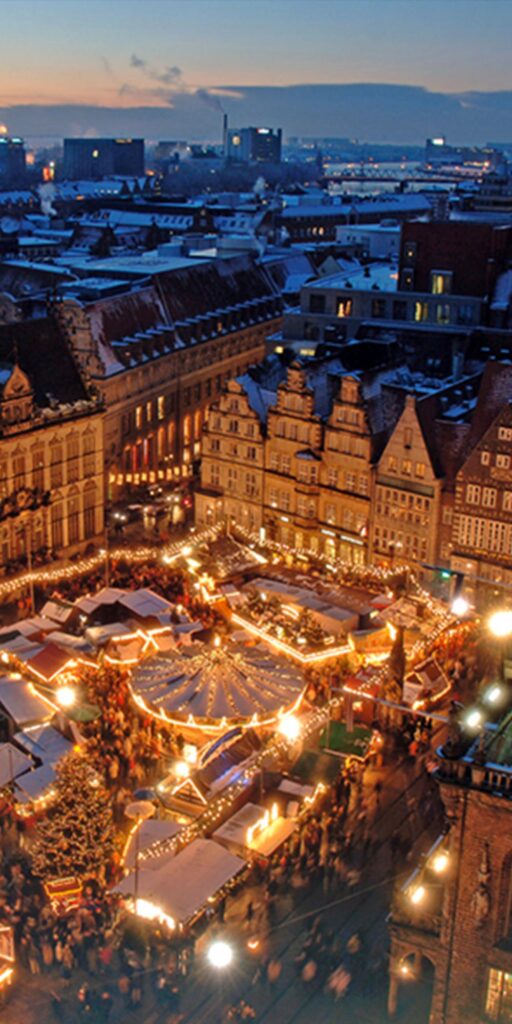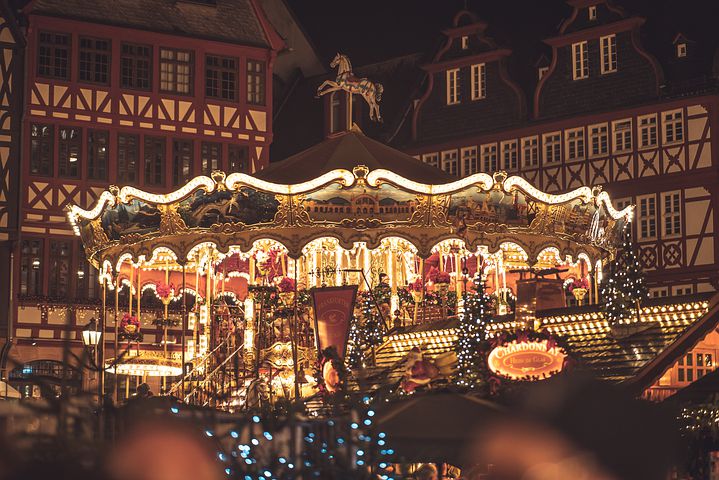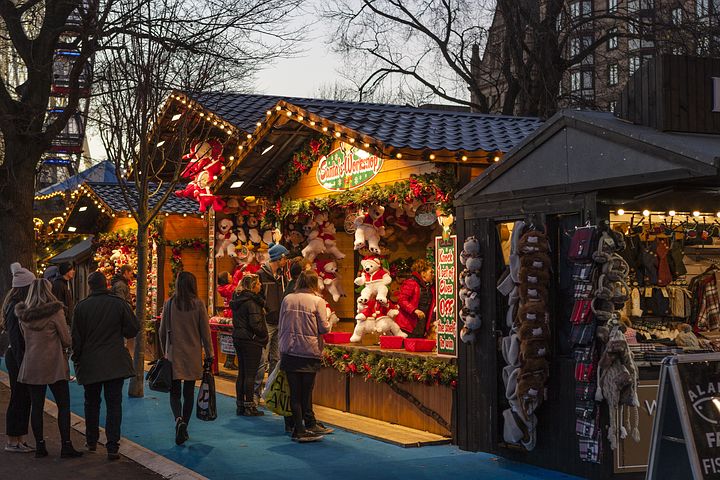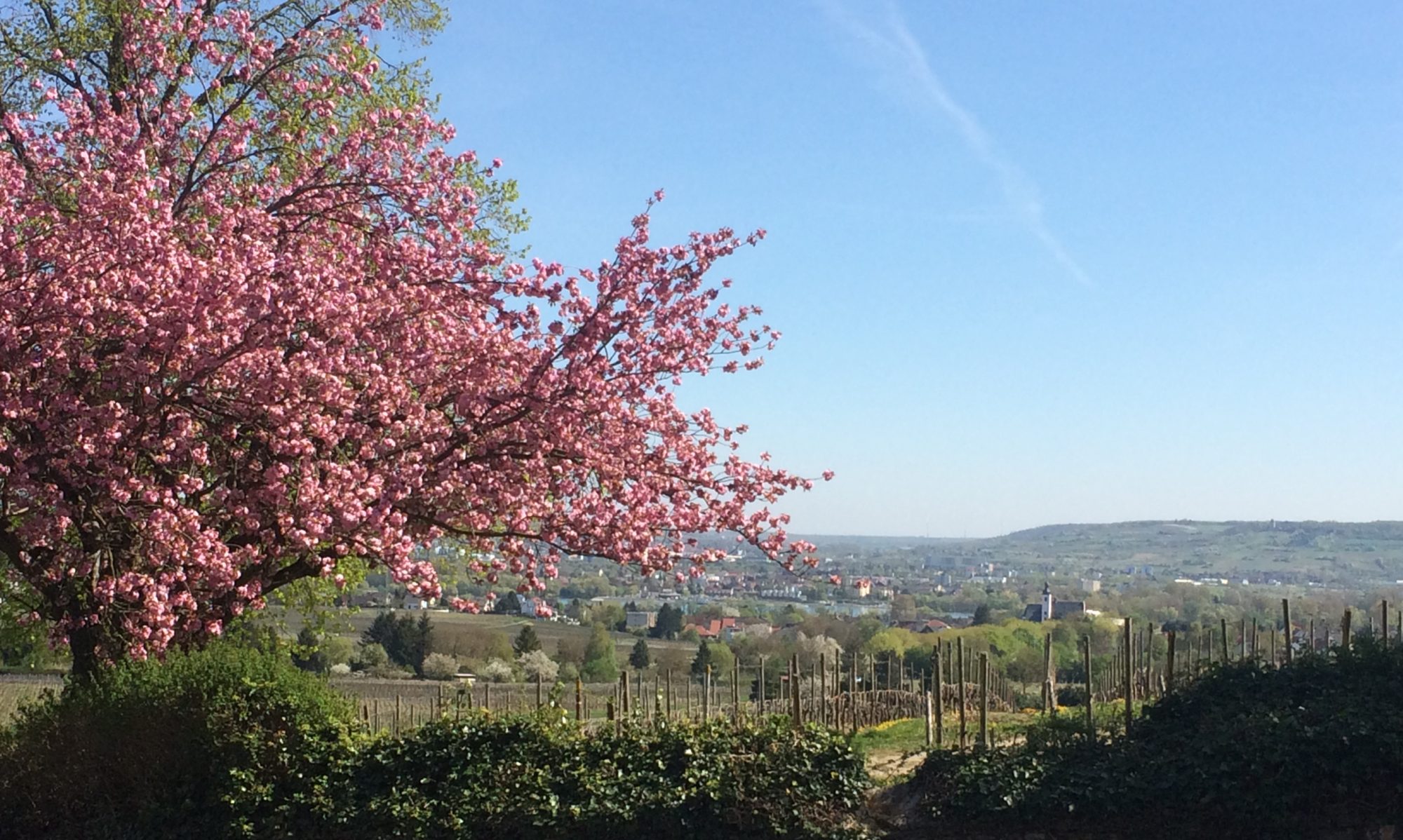By Karen Shambaugh Rink
It is that time of year again: the Weihnachtsmärkte (Christmas Markets) begin in Germany and other European countries during the four weeks before Christmas. They are so popular that you will find these markets in large and small cities, indoor or outdoor, at schools, in churches, in clubs, in barns, in castles, just everywhere! If you have ever gone to one, you know just how beautiful, exciting, and how much fun it is to walk around the market under the sparkling, festive lights and admire all of the beautiful stands with the many handmade products and specialty foods.
The whole atmosphere is exciting, full of expectation and fun for the holidays. People of all ages love to visit the Christmas Market, especially parents bring their small children to experience the magic of the holidays and to continue the family tradition of visiting or participating in some way in the event.

The fresh, crisp air of November and December adds to the excitement, along with the scent of pine trees and boughs decorating the stands, plus the handmade Advent wreaths for sale. Walking through the market, it is easy to find handmade gifts for everyone on your shopping list such as knit wool socks and hats, Schmuck (jewelry), scarves, wood or leather items, knit sweaters, Christmas ornaments of straw, wood or glass, Scherenschnitterei (paper cutting), Bauernmalerei (hand-painted objects), locally produced honey and beeswax candles, wooden Nutcrackers, Pyramids, Smokers, Candle Arches (some of these items are available for purchase at our own stand at the Continental Congress Units Overseas Luncheon), and much more.
The scent of Glühwein (warm mulled wine) easily attracts many people as does the scent of Zimtwaffeln (cinnamon cookies) made on site. Of course, the typical bratwurst with mustard and beer are available, but there are specialty foods, such as Maronen (hot chestnuts), Baumstriezel (a pastry), Wildschwein-Goulasch (wild boar stew), Kartoffelpuffer (potato pancakes), Gebrannte Mandeln (sugar-coated almonds), Lebkuchen (ginger bread) in all sizes and shapes, Schokolade (chocolate), Bretzeln (pretzels), Christstollen (similar to fruit cake), waffles, crêpes, and many other sweets and specialties.
Each Christmas Market is a bit different from the others by featuring local history or specialties, some offer entertainment such as carousels for children, choirs and musical performances; even the arrival of Nikolaus (Santa Claus) is exciting for visitors of all ages.

The city of Köln (Cologne) has several Weihnachtsmärkte with the most well-known being located in front of the famous Cathedral (one of the tallest in the world, it was built in 1247) and draws over 4 million visitors each year to the 150 stands in the Roncalliplatz.
Dresden has been hosting The Striezelmarkt, considered the first genuine Christmas market in the world, founded in 1434, and celebrated its 585th anniversary in 2019. This market attracts about 3 million visitors from all over the world, it has 240 stands, and boasts the world’s tallest Christmas pyramid.
Rothenburg ob der Tauber is a medieval walled city which dates from 1274 and has been hosting a Weihnachtsmarkt for 500 years. Rothenburg is also the home of the Käthe Wohlfahrt Christmas store.
How did these markets get started? Our story begins in the late Middle Ages in parts of the former Holy Roman Empire. The precursor to Christmas markets is thought to be Vienna’s Dezembermarkt (December Market), dating back to around 1296. Emperor Albrecht I granted shopkeepers the rights to hold a market for a day or two in early winter so that townspeople could stock up on supplies to last through the cold months.

Wintermärkte (winter markets) began to spring up all over Europe. Over time, local families started setting up stalls to sell baskets, toys, and woodcarvings alongside others selling almonds, roasted chestnuts, and gingerbread. These were often bought as gifts to give away at Christmas. It was the winter markets that eventually became known as Christmas Markets—the earliest of which are claimed to be in Germany: Munich in around 1310, Bautzen in 1384, and Frankfurt in 1393. Footnote: 1
Some of the most famous Weihnachtsmärkte in Germany are found in Köln (Cologne), Dresden, Berlin, Stuttgart, Leipzig, Aachen, Nuremberg, Munich, Hamburg, and Schloss Guteneck. Footnote:2
Unfortunately, due to the Covid-19 virus, most Christmas markets will not take place this year. Several markets will hold drive-thru and pick-up service or online ordering of certain products, but we all hope things will get back to normal next year.
So that you can enjoy that special Weihnachts-feeling, click on this link to hear beautiful Christmas music:
and enjoy these virtual Christmas market tours here:
We wish you the very BEST of the Christmas season and especially good health in 2021.
Frohe Weihnachten (Merry Christmas)!
Sources:
1. https://fiveminutehistory.com/a-brief-history-of-christmas-markets/
2. https://www.wanderlust.co.uk/content/top-8-german-christmas-markets/
